Shenandoah lies along the northern part of the Blue Ridge Mountains. Thickly forested hillsides hide black bears, waterfalls, and overlooks with breathtaking views.
Would you like to learn more about this wonderful park? Let’s take a look at some unique things about Shenandoah National Park.
Subscribe to daily national parks planning tips, travel inspiration and trip ideas and I’ll send you a free PDF
10 Fun Facts About Shenandoah National Park
No time right now to discover some fun facts about Shenandoah National Park? Pin It and save it for later:
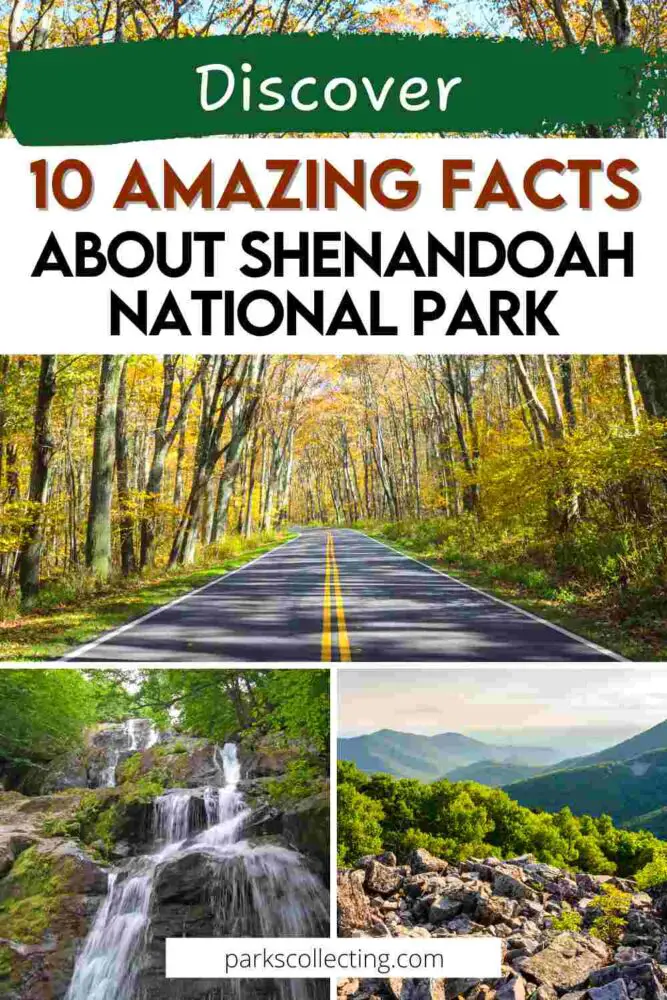
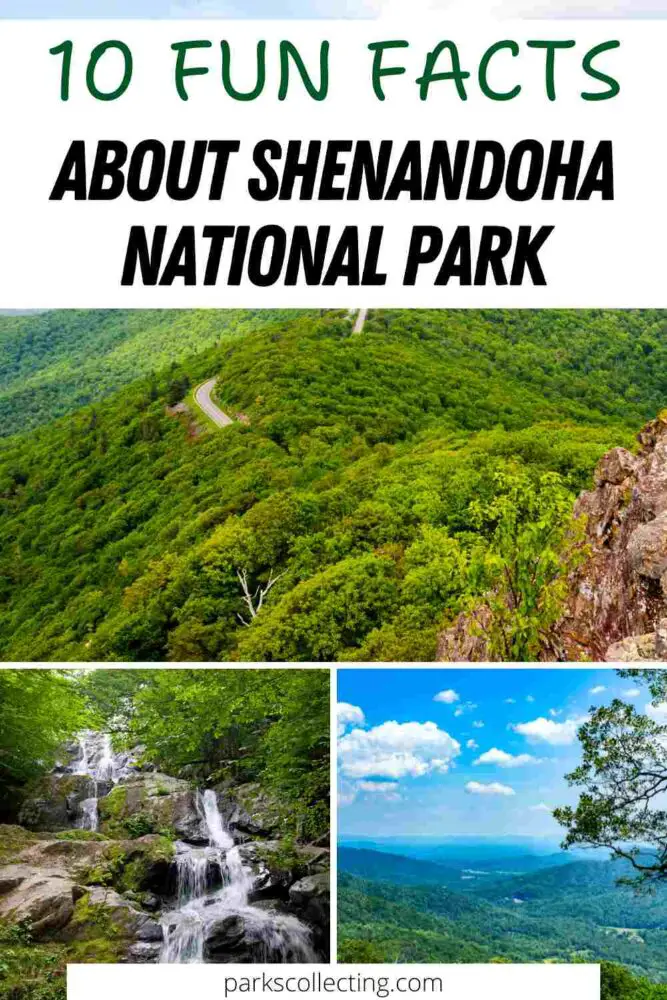
🛏️TOP HOTEL NEAR FRONT ROYAL: Check availability now
🛏️TOP HOTEL NEAR LURAY: Check availability now
🛏️TOP HOTEL IN CHARLOTTESVILLE: Check availability now
🚘FIND THE CHEAPEST CAR RENTAL: Search Discover Cars for the best deals
✈️FIND THE CHEAPEST FLIGHTS: Search Skyscanner for the best deals
🧳GET TRAVEL INSURANCE: Get insured with Travelex before you go
📱TAKE AN AUDIO TOUR: Buy an audio tour now
Table of Contents
Basic Shenandoah National Park Facts
⭐ Location: Blue Ridge Mountains, Virginia
⭐ Size: 199,200 acres
⭐ Number of Visitors each Year: 1.6 million
⭐ Annual Rainfall: 52 inches of precipitation at Big Meadows (37 inches of snow and 15 inches of rain)
⭐ Highest Shenandoah National Park Elevation: 4,049 feet (Hawksbill Mountain)
⭐ Lowest Elevation: 530 feet (at an unnamed stream)
⭐ When was Shenandoah National Park established: Shenandoah National Park was established on December 26, 1935, and formally opened by President Franklin Delano Roosevelt on July 3, 1936.
10 Fun Facts About Shenandoah National Park
Here are 10 facts about Shenandoah National Park that you never knew you needed to know!
1. Shenandoah National Park was created to be a scenic drive

Shenandoah National Park was designed with motorists in mind. Literally. When the park was being proposed, it was created around the central concept of a scenic drive along the top of the Blue Ridge Mountains.
The park’s Skyline Drive is a 105-mile route that offers stunning views of the mountains and surrounding valleys. It’s the only public road through the park and has over 70 overlooks where you can stop and appreciate the scenery.
The drive is accessible 24 hours a day, weather permitting, and can be accessed from four different entrance stations: Front Royal, Thornton Gap, Swift Run Gap, and Rockfish Gap.
READ MORE:
➡️ Skyline Drive Mile Markers
➡️ 25 Best Overlooks On Skyline Drive
2. Shenandoah National Park includes a 101-mile section of the famous Appalachian Trail
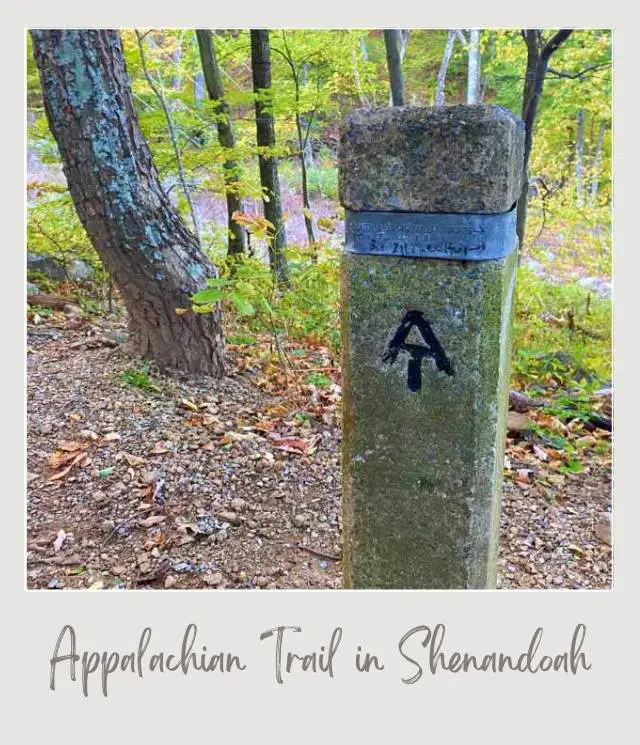
Among the park’s extensive network of over 500 miles of trails, a 101-mile section of the Appalachian Trail runs through Shenandoah. There entire Appalachian Trail is 2,198.4 miles, stretching all the way from Georgia in the south to Maine in the north.
If you don’t want to take seven months out of your life to hike the whole thing, never fear.
There are several trails in the park that intersect with this famous trail. If you want to say that you hiked the Appalachian Trail (or at least part of it), head to trails such as the Stony Man and Hawksbill Mountain trails. Even without the bragging rights, these trails offer some of the best views in the park.
➡️ READ MORE: Best Hikes in Shenandoah National Park
3. In order to create the national park, hundreds of mountain settlers were displaced
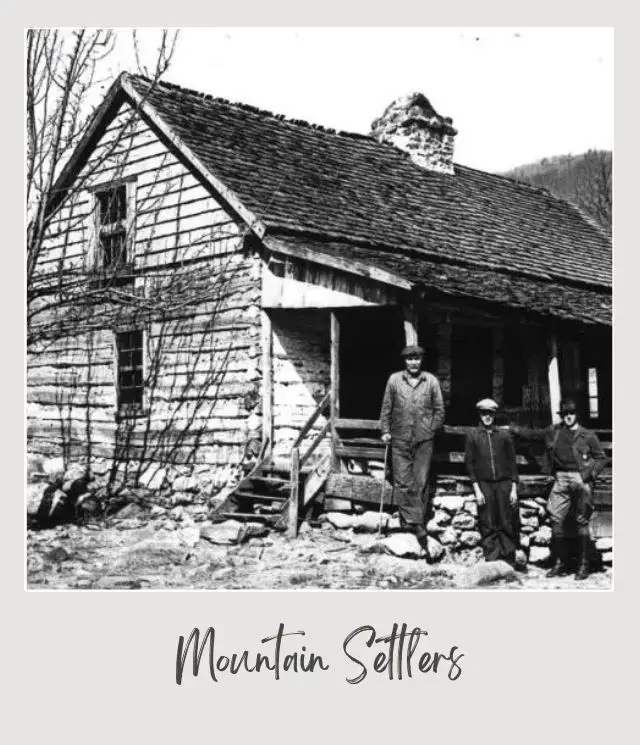
Shenandoah was the first national park created from land purchased from private owners. In fact, the creation of Shenandoah National Park required the displacement of hundreds of mountain settlers.
This process began nicely enough in 1931. The narrow 100-foot right-of-way for the Skyline Drive was purchased from willing landowners happy to have a road that gave easy access to their adjacent properties. More than 6,000 acres at Skyland and White Oak Canyon were happily sold to boost numbers of guests at the resort. And the land at Big Meadows was also sold willingly.
Things went downhill after that, though. 465 families were forcibly resettled between 1935 and 1937. 42 elderly residents were given life estates, 175 families were relocated to resettlement communities, several families were physically evicted and their houses burned, and the majority of the mountain residents just left the mountain on their own.
The park now contains historic districts and over 100 cemeteries that serve as reminders of those who once called this place home.
4. Shenandoah National Park was built by the Civilian Conservation Corps (CCC) during the Great Depression
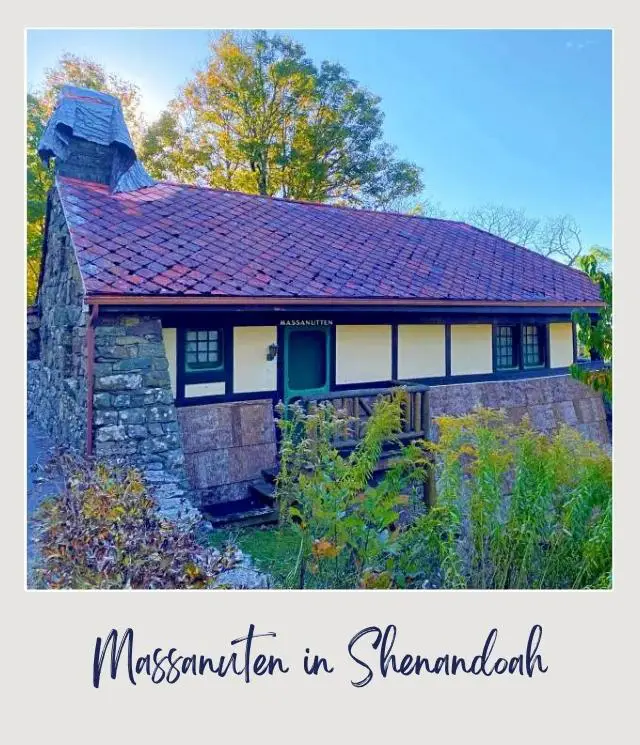
The CCC played a pivotal role in the development of Shenandoah National Park during the Great Depression.
The Civilian Conservation Corps (CCC) was established in 1933 as part of the New Deal Program, to help lift the United States out of the Great Depression. Single men between the ages of 18 and 25 worked in programs to improve America’s public lands, forests, and parks.
The first CCC camp in any national park was established here in 1933. These workers were instrumental in building the park’s infrastructure, including building the Skyline Drive, constructing trails and shelters, and planting trees.
➡️ READ MORE: Nature’s New Deal: The Civilian Conservation Corps and the Roots of the American Environmental Movement by Neil M. Maher.
5. No one knows for sure what ‘Shenandoah’ means
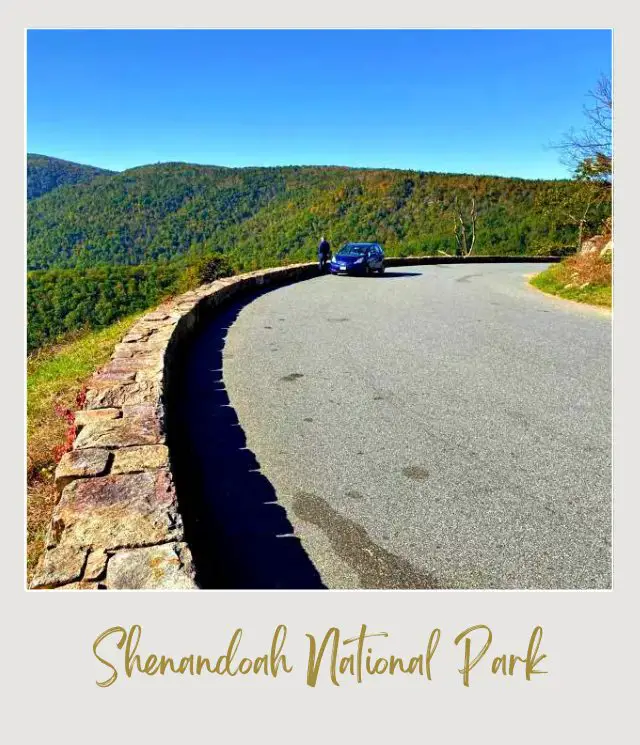
The origin of the name ‘Shenandoah’ is uncertain, but it is believed to have Indigenous American roots. Some people think it comes from the Algonquian name, schind-han-do-wi, which may mean “spruce stream,” “great plains,” or “beautiful daughter of the stars.”
Others think it comes from the Iroquois word for “Big Meadow”. Another theory is that it comes from the word “Schin-han-dowi,”, meaning “River Through the Spruces”. Yet another idea is that it’s derived from the word “On-an-da-goa,” meaning the “River of High Mountains”.
Regardless of its true origin, the name is deeply connected to the valley’s history and culture.
6. Shenandoah National Park has the highest concentration of black bears on the east coast
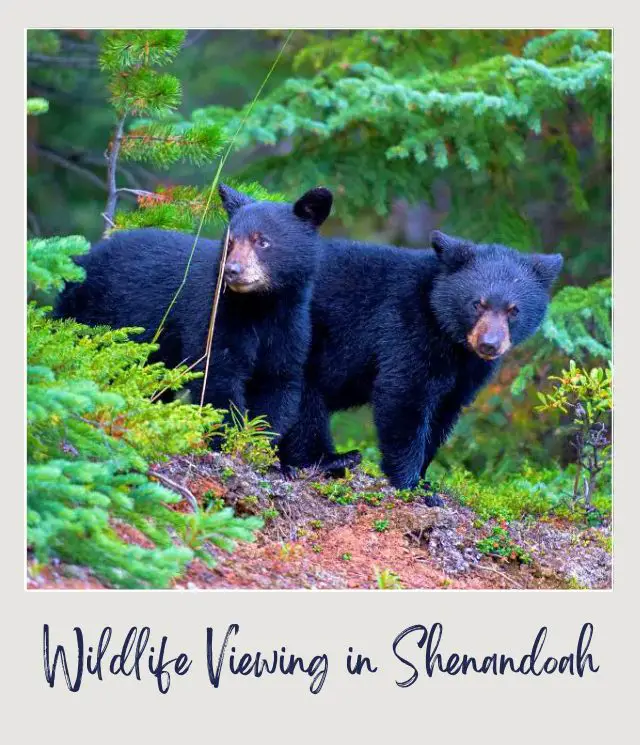
Shenandoah National Park is home to one of the highest concentrations of black bears on the east coast (I suspect because more and more people have moved into the surrounding areas, pushing the bears into the protected national park, but this is just my theory).
Bear sightings are common. So, keep your eyes peeled—you might just spot a black bear foraging in the underbrush or crossing one of the trails.
Remember to maintain a safe distance and never feed the bears, as human food can harm their health and alter natural behaviors.
➡️ Take bear spray and/ or a bear horn with you when you hike. And stick to the speed limit on the Skyline Drive, so you can stop in time if a bear is on the road.
7. Shenandoah National Park receives 25% of its annual visitors in October
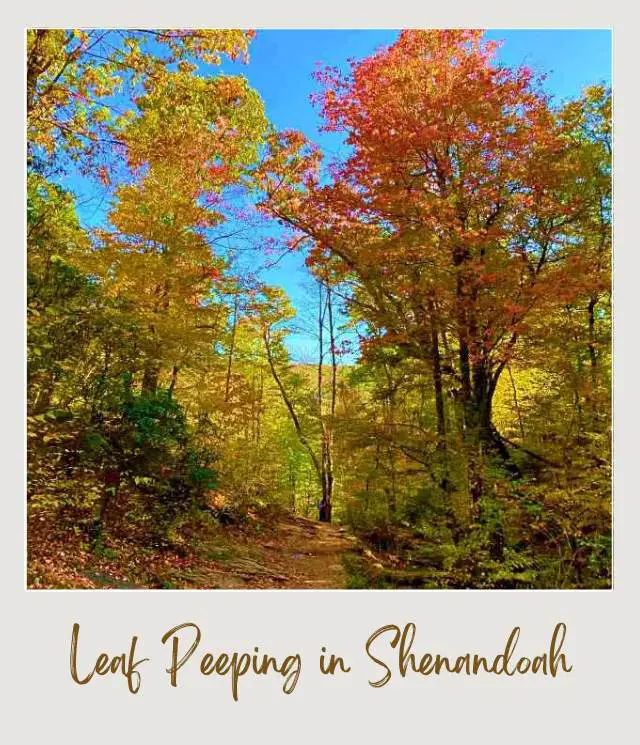
Shenandoah National Park experiences a surge in visitors during October due to the changing leaves. This is by far the most popular time to visit (and my personal favorite time), as the foliage changes colors.
The park’s landscape is known for this seasonal change, drawing crowds who come to see the transformation. The process starts in late September, peaks in October, and by November, most of the leaves have fallen.
The season is extended because the leaves change color at the top of the ridge, along the Skyline drive, first, and then the color gradually creeps down the sides of the mountain.
Because this is the busiest time in the park – and because it is so close to Washington DC, try to visit mid-week if you can. I’ve been there mid-week in mid-October and it was less crowded than I expected. Weekends, though, are a whole other story.
8. Shenandoah National Park is the perfect place to chase waterfalls

Shenandoah National Park is home to some of the most picturesque waterfalls on the East Coast.
Popular falls include Browns Gap, Dark Hollow Falls, Doyles River Falls, South River Falls, and Overall Run Falls, the tallest at 93 feet. These waterfalls provide natural points of interest throughout the park.
Hiking to these waterfalls is a popular activity. Trails to the waterfalls range in difficulty and offer different views of the park’s landscape.
The most popular waterfall in Shenandoah is the easily accessed Dark Hollow Falls. The waterfall is lovely – just keep in mind that because you start at the Skyline Trail, you hike down to the waterfall, and then have to hike back up the hill to get back to your vehicle!
➡️ READ MORE: Best Waterfalls in Shenandoah National Park
9. Shenandoah is one of the best places on the east coast for star gazing
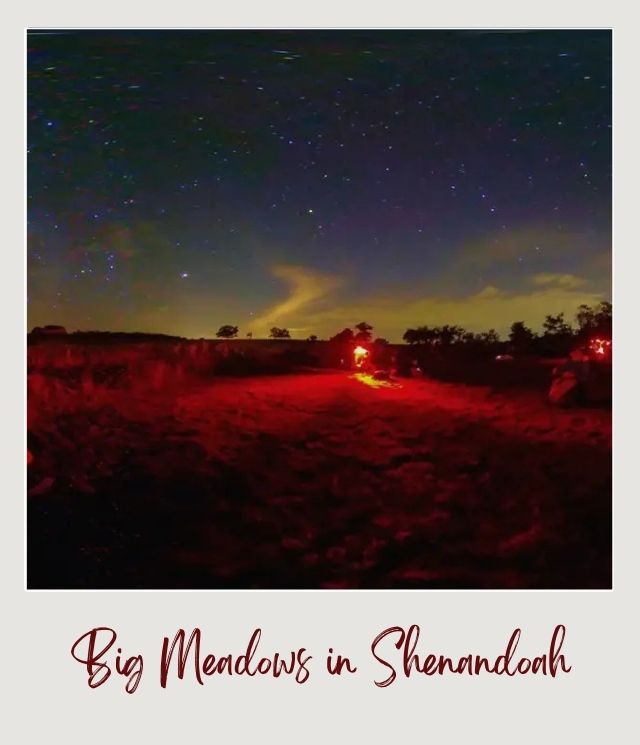
Shenandoah National Park transforms into a stargazer’s sanctuary as the sun sets. The park’s minimal light pollution allows for some of the clearest night skies on the East Coast, making it an ideal spot for astronomy enthusiasts and romantics alike.
Big Meadows, in particular, is renowned for its dark skies; here, the Milky Way stretches across the horizon, and shooting stars are a common sight during meteor showers.
The park often hosts night sky programs, where rangers guide you through the constellations, planets, and celestial stories. These programs are not only educational but also a reminder of our place in the vast universe.
Bring a blanket, lie back, and watch as the night sky comes alive with twinkling stars—a reminder of the natural beauty that shines above us.
10. President Hoover built Rapidan Camp as a “summer White House”
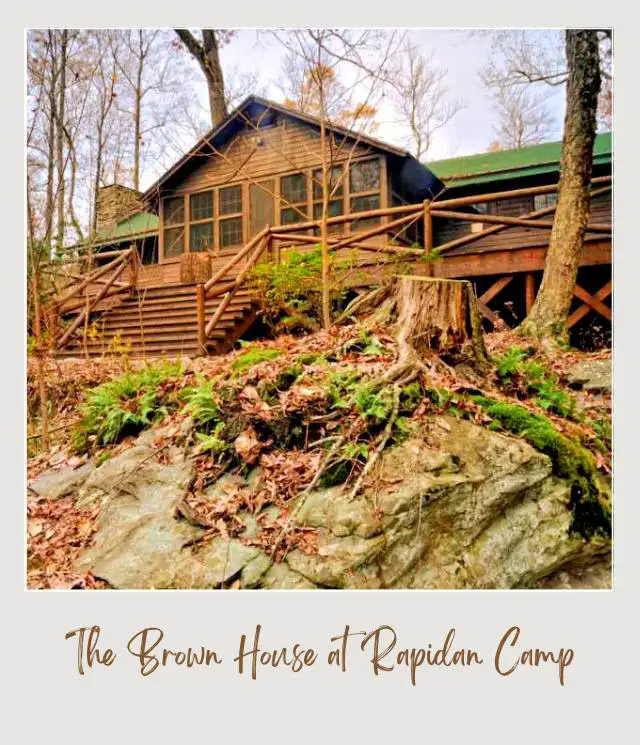
Nestled within the peaceful woods of Shenandoah National Park, Rapidan Camp served as a retreat for President Herbert Hoover and First Lady Lou Henry Hoover during his administration (1929 to 1933).
Designated a National Historic Landmark in 1988, the camp, also known as “Camp Hoover,” served as a summer White House where the Hoovers could escape the pressures of Washington and reconnect with nature. The camp has historical significance for its use by the president and for the decisions made there.
The camp features three original buildings including the President’s Cabin, the Prime Ministers Cabin and The Creel.
You can take a tour Rapidan Camp with a ranger and learn about the history of the camp and the Hoovers’ time there. These tours require reservations and include traveling in a van for seven miles on an unpaved road, followed by visits to the Brown House and Prime the Prime Minister’s Cabin.
If you prefer to explore independently, there are hiking trails that lead to the camp. You see the camp and enjoy the natural environment of the park at the same time.
Horseback riding to Rapidan Camp is another option. This mode of transportation is in line with the park’s history and offers a different experience. Riders must follow specific rules and best practices for horseback riding in the park.
Whether by foot, horse, or guided tour, Rapidan Camp is accessible to visitors interested in the history of Shenandoah National Park and the legacy of President Hoover.
Subscribe to daily national parks planning tips, travel inspiration and trip ideas and I’ll send you a free PDF
10 Fun Facts About Shenandoah National Park
More Information About Shenandoah National Park
Are you feeling inspired to visit Shenandoah National Park? Start planning your trip now with these guides:
⭐ Shenandoah National Park Guide
⭐ Planning A Trip to Shenandoah National Park: 7 Mistakes to Avoid
⭐ 25 Best Overlooks On Skyline Drive
⭐ Skyline Drive Mile Markers
⭐ Best Things To Do in Shenandoah National Park
⭐ The Best Waterfalls in Shenandoah National Park
⭐ Best Hikes in Shenandoah National Park
⭐ How To Get to Shenandoah National Park
⭐ All The Airports Near Shenandoah National Park
⭐ The Closest Airport to Shenandoah National Park
⭐ Best Time to Visit Shenandoah National Park
⭐ Visiting Shenandoah National Park: What To Expect Throughout the Year
⭐ 10 Tips For Visiting Shenandoah National Park
Do you have any other fun facts about Shenandoah National Park to share? I’d love to hear them. Join my private Facebook group National Parks Collectors and comment and let me know (you can also pick up extra planning tips, share your photos and stories with other national park lovers and more).
If you liked this article, Pin It to your Shenandoah National Park board!


💡 Are you just starting to think about taking a National Parks trip? Get Inspiration
‼️ Are you looking for helpful tips for visiting US national parks? Read articles that share useful tips on a range of national-park related issues
💻 Are you starting to plan a trip to Shenadoah National Park? Read my Guide to Shenandoah National Park
💲 Are you ready to book your trip? Use these Planning and Booking Resources
📖 Do you want to read a book about US national parks? Check out my Recommended Reading Lists
About the Author
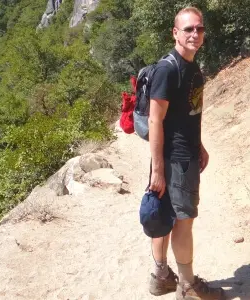
James Ian is a national park, camping and hiking expert.
He has dedicated his life to travel, visiting more than 80 countries, all 7 continents and most of the national parks in the United States. With over 35 years experience in the travel industry, James has worked on cruise ships, at resorts and hotels, and as a travel planner who’s helped hundreds of people plan successful trips to US national parks.
Based on his experience visiting our national parks multiple times, in-depth research and expertise as a travel planner, James has published detailed itineraries for many of the major national parks in the US. These itineraries, as well as in-depth park guides, and other resources will help you have your own incredible trip to US national parks without stress and hassle.
As a national park expert, James has contributed to many publications, including USA Today, Newsweek, Time Business News, Savoteur, Best Trip, and Wired.
I’m a member of the Amazon Services LLC Associates Program. As an Amazon Associate I earn from qualifying purchases.
